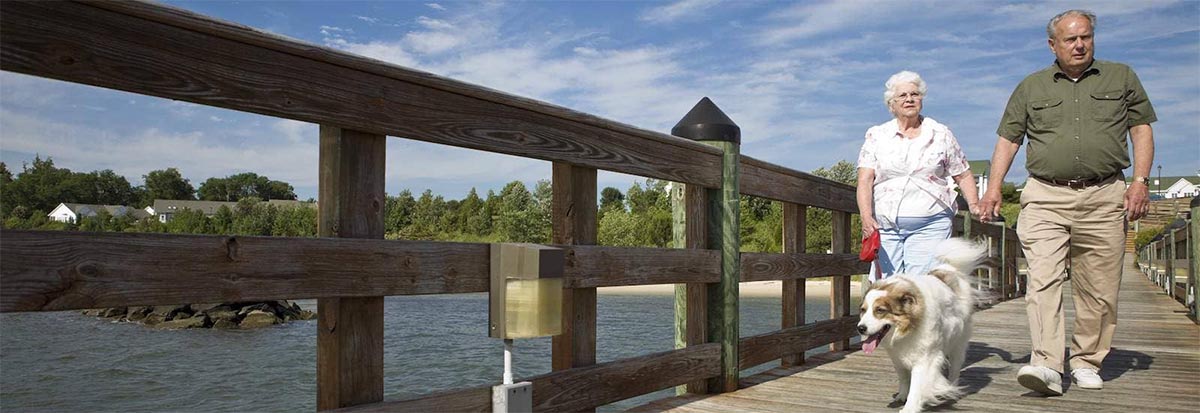How Do CCRCs Work?
We sincerely believe that for many people, moving to a continuing care retirement community (CCRC) is the best move they have ever made. The reason? They tell us! But such an important life decision requires all the facts.
1. The Financial Facts & Cost of Aging in Place
Although it is natural to focus on the change in residence when moving to a continuing care retirement community, Asbury’s communities are more similar to an insurance policy, rather than a real estate purchase. You will have a support network in place no matter what happens down the road. This is accomplished through three primary funding sources.
Entrance Fee
- Even though your residence in a continuing care retirement community is maintenance-free, the community does require maintenance. Entrance fees help provide capital funds for upkeep, enhancements, and the wide range of services, programs, and staff that a well-run community requires. Asbury has been serving seniors for close to a century, and has Fitch-rated bonds and strong financial reserves.
- The one-time entrance fee varies according to your residence and which entrance fee plan you choose, declining refundable plan or set percentage refund.
Monthly Services Fee
- Many people are surprised to find this fee is the same or slightly less than their monthly household budget, especially when factoring in maintenance and unexpected repairs. People typically compare the monthly fee at a continuing care retirement community to a mortgage. But your mortgage pays only for the roof over your head. Your residence is just the beginning of what is covered by your monthly services fee.
- The services fee also includes access to continuing education programs, clubs, on-campus cultural events and regular trips to off-campus events and destinations, a fitness center and classes with certified staff, banking, and dining options for when you don’t want to cook.
Benevolent Care
As a not-for-profit with a faith-based heritage, Asbury is a mission-driven organization. This pledge includes consideration for benevolent care for residents who outlive their resources through no fault of their own.
2. A Plan for the Future – Health Services & Wellness Support
A CCRC is designed for aging well, providing options and support that allow you to make the decisions that are best for you as you age. Because of this, a CCRC gives you more control over how your life will unfold. Many residents also consider the move a gift to their children, who will not face moving them in a crisis or managing their parents’ estate.
Unexpected events are a fact of life. If you become ill, injured or require a hospital stay, you receive priority health care access and rehabilitative services in a place you know with providers you trust. Your residence will be waiting for you when you return.
Support in a crisis
- During hospitalization, your community’s care navigation team springs into action, meeting with your care team and putting in place transportation, a follow-up plan, home care services or equipment for a smooth return to the community and successful recovery.
Temporary health support
- Asbury Solomons resident Peggy Hovermale benefitted from this while recovering from a hip replacement. She spent several days in the health care center post-surgery and then returned to her apartment while receiving therapy. Being able to remain with her large network of friends at Asbury Solomons and in Calvert County, MD, made the process much less stressful, Peggy emphasizes.
Supporting chronic conditions
- Moving to a different level of care can be temporary, as in Peggy’s case, or permanent as needs change. Many residents credit the support services with keeping their independence longer than if they had not moved.
3. Timing Your Move – 3 Important Factors
When considering the timing of your move, thinking with your head instead of your heart is important.
- Your health: Waiting until you need the health services of a CCRC means losing wellness benefits, and may put residential living options out of reach. Another consideration is the challenge of selling a house and moving in the best of health – even with the moving coordination a CCRC provides.
- The economy: Assets fluctuate, something we were reminded of in 2008. The value of your home and investments change with the markets. Keep an eye on the local markets, engage with a realtor, and if home prices are creeping up, think strategically.
- The right fit: An established CCRC is not built-to-order. Unless an expansion is in the works, inventory is limited. If you desire an apartment or cottage or garden home with a specific feature or view and it becomes available, even though it may be sooner than you had planned, be flexible.
If you are interested in the CCRC’s offered by Asbury, explore our continuing care retirement communities in PA, TN, and MD here or contact us directly.




